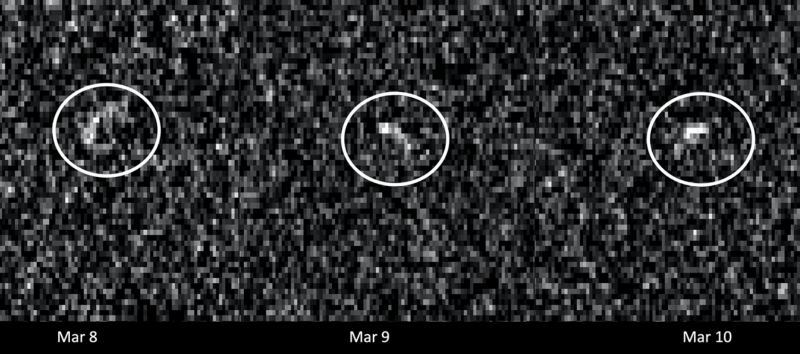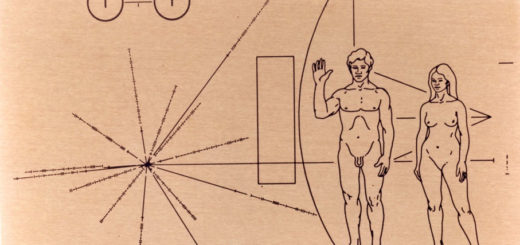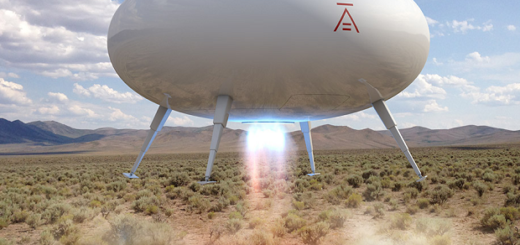Earth Is Safe From Asteroid Apophis For The Next 100 Years

During the asteroid Apophis’ most recent flyby in early March, astronomers were busy taking observations of this infamous space rock. Later calculations let NASA scientists announce on March 26, 2021, that Earth is safe from an impact with the relatively large asteroid for at least the next 100 years. Radar observations taken at NASA’s Goldstone Deep Space Communications Complex in California and the Green Bank Observatory in West Virginia have officially ruled out an impact in 2068, the only year out of the next 100 that previously showed a slight risk. Earlier observations had ruled out impacts during the upcoming 2029 and 2036 flybys.
Davide Farnocchia of NASA’s Center for Near-Earth Object Studies said:
A 2068 impact is not in the realm of possibility anymore, and our calculations don’t show any impact risk for at least the next 100 years.
This new analysis means that Apophis is no longer on the Sentry Impact Risk Table, which is a list of objects that pass so close by Earth that astronomers have not yet been able to rule out a possible strike.
Apophis is a near-Earth asteroid with a relatively large size (it is about 1,100 feet – or 335 meters – wide). It gained notoriety in 2004 when early observations suggested it might strike Earth in 2029. Though it will come breathtakingly close to Earth in 2029, a strike was subsequently ruled out. Apophis should pass on Friday 13, April 2029 at a nominal distance of 19,662 miles (31,643 km) from Earth’s surface. That’s in contrast to the moon’s average distance of about a quarter-million miles (380,000 km).
Field of stars with a brighter smudge in three places, each circled in white.
These images show asteroid Apophis during 3 days of its flyby on March 8, 9 and 10, 2021. Radio antennas at the Deep Space Network’s Goldstone complex in California and the Green Bank Telescope in West Virginia worked together to acquire these images. The asteroid was 10.6 million miles (17 million km) away, and each pixel has a resolution of 127 feet (39 meters). Image via NASA/ JPL-Caltech/ NSF/ AUI/ GBO.
In early March, all eyes turned toward Apophis as the asteroid made a relatively close sweep (though not nearly as close as in 2029) to our planet on March 6. The Goldstone Deep Space Communications Complex tracked the asteroid for about two weeks around closest approach. Researchers at the Green Bank Telescope took observations, coordinating with Goldstone, because the use of these two telescopes together allows the data to be sharper. The coordination between the two telescopes meant that Goldstone was transmitting data while Green Bank was receiving, performing what is known as a bistatic experiment that doubled the strength of the received signal. Marina Brozovic of NASA’s Jet Propulsion Laboratory explained:
Apophis made a recent close approach with Earth, it was still nearly 10.6 million miles (17 million kilometers) away. Even so, we were able to acquire incredibly precise information about its distance to an accuracy of about 150 meters (490 feet). This campaign not only helped us rule out any impact risk, it set us up for a wonderful science opportunity.
The images seen at top are the product of the collaboration. Brozovic went on to describe the excellent quality achieved through the collaboration, which she called:
…a remarkable resolution, considering the asteroid was 17 million kilometers away, or about 44 times the Earth-moon distance. If we had binoculars as powerful as this radar, we would be able to sit in Los Angeles and read a dinner menu at a restaurant in New York.
Further analysis of the radar data collected in early March should help astronomers learn what Apophis’ shape is. Previous observations suggest that the asteroid is peanut-shaped – also described as bilobed, or having two lobes – a common shape for near-Earth asteroids.
In addition, astronomers hope to learn more about the asteroid’s rotation rate and spin state, which might tell them what effects could occur on Apophis during its very close flyby in 2029. As the asteroid encounters Earth’s gravitational field in 2029, asteroid quakes could result on Apophis.
Many tiny white parallel streaks on a dark gray background; an arrow pointing to a dot in the middle.
The Virtual Telescope Project, based in Rome, Italy, captured asteroid (99942) Apophis on March 2, 2021. The asteroid shows as a dot – while the stars around it show as streaks – because the telescope was tracking the asteroid’s motion. It is moving through space with respect to Earth at 4.658 km/sec (2.894 miles/sec). Image via Virtual Telescope.
Astronomers are also planning to study asteroid Apophis using NASA’s NEOWISE infrared space telescope in April 2021. This is the same telescope that discovered 2020’s favorite comet, Comet NEOWISE, which has now faded from view.
Astronomers in Hawaii recently studied how Yarkovsky acceleration, or pushes due to sunlight, would change Apophis’ orbit. In some instances, acceleration – a change in an object’s speed and direction through space – can help avoid a collision. Studies of Yarkovsky acceleration as related to asteroid Apophis suggest this is the case for this asteroid. Previous calculations (made in 2016) had already all but ruled out the probability of an impact in 2068. The chance of an impact was seen in 2016 as vanishingly small, at just 1 in 150,000 odds of impact, or a 99.99933% chance the asteroid would miss the Earth.
The more recent observations, first discussed in October 2020 and updated again in early 2021, showed a decreasing risk.
Animation of the orbits of Earth and Apophis showing how often they cross each other.
Orbit of asteroid Apophis (pink) in contrast to the orbit of Earth (blue). The yellow dot represents the sun. Apophis takes 323.6 days to orbit the sun. Earth takes 365.3 days. Thus this asteroid is a fairly frequent visitor to our region of space. Image via Phoenix7777/ Wikimedia Commons.
Astronomer Dave Tholen and colleagues suggest that Apophis is drifting more than 500 feet (about 170 meters) per year from its expected position in its orbit. These observations aren’t easy to obtain and analyze. Factors such as the asteroid’s distance at the time of observation, its composition, its shape and its surface features all affect the outcome.
Read more about the Yarkovsky effect: Pushing asteroids around with sunlight
Apophis is, of course, not the only near-Earth asteroid. In recent years, astronomers have been able to find and track many tiny asteroids sweeping near Earth. For example, on September 24, 2020, asteroid 2020 SW swept even closer to us than our meteorological and television satellites as well as other geostationary satellites, which orbit our planet at some 22,300 miles (35,900 km) from Earth’s surface. Asteroid 2020 SW came within about 7% of the Earth-moon distance. But asteroid 2020 SW is estimated to be only about 14 to 32 feet (about 4.5 to 10 meters) in diameter. That’s very small in contrast to asteroid Apophis.
Earth inside ring of very many dots, and the path of the asteroid as a yellow line passing close to the dots.
This animation shows the distance between the Apophis asteroid and Earth at the time of the asteroid’s closest approach in 2029. The blue dots are manmade satellites orbiting our planet, and the pink represents the International Space Station. Image via NASA/ JPL-Caltech.
The 2029 pass of asteroid Apophis. The April 13, 2029, encounter of Apophis with Earth will be extremely close. At its closest in 2029, Apophis will sweep at about 10% of the Earth-moon distance. That’s very close for a space rock over 1,115 ft (340 meters) across! Lance Benner of NASA/JPL commented:
This will be the closest approach by something this large currently known. (In 2029) Apophis will be visible to the unaided eye for several hours, and Earth tides will probably change its spin state.
Friday, April 13, 2029, will be a showtime for asteroid Apophis, for the general public and astronomers alike. Apophis will come so close that it’ll be visible to the unaided eye alone; something that almost never happens with asteroids. According to NASA, Apophis will first become visible in the Southern Hemisphere and will look like a speck of light moving across Australia during this close encounter. It will be over the Atlantic Ocean at its closest approach to Earth. It will move so fast that it crosses the Atlantic in just an hour, and will have crossed the U.S. in the late afternoon/early evening within the next hour. Calculations indicate that Apophis will reach a visual magnitude of 3.1 during this approach, comparable to the stars in the Little Dipper. In 2029, Apophis is expected to be visible to the unaided eye from some areas of Australia, western Asia, Africa, and Europe.
Like many other asteroids, Apophis has been classified as a potentially hazardous asteroid by the International Astronomical Union’s Minor Planet Center. That just means it’s an asteroid whose orbit brings it close to Earth on occasion, which is large enough to cause “significant regional damage” in the event of an impact. A survey by the NEOWISE spacecraft in 2012 suggested that there are 4,700 ± 1,500 potentially hazardous asteroids with a diameter greater than 100 meters.
According to some estimates, an asteroid the size of Apophis can be expected to strike Earth about every 80,000 years.
Diagram of Earth with moon’s orbit and a line coming very close to Earth, slightly bent as it passes.
As a result of the extremely close approach of April 2029, it is expected that perturbations caused by Earth’s gravity will change Apophis’ orbit from the Aten to the Apollo class. Image via Marco Polo/ Wikimedia Commons.
Bottom line: Observations of asteroid Apophis in early March enabled astronomers to conclude that Apophis has no chance of impacting with Earth in the next 100 years.



 Creators of mankind
Creators of mankind Description of “Tall white aliens”
Description of “Tall white aliens” Where they came from?
Where they came from? About hostile civilizations
About hostile civilizations The war for the Earth
The war for the Earth “Tall white aliens” about eternal life
“Tall white aliens” about eternal life Video: “Nordic aliens”
Video: “Nordic aliens” Aliens
Aliens Alien encounters
Alien encounters The aliens base
The aliens base UFO
UFO Technology UFO
Technology UFO Underground civilization
Underground civilization Ancient alien artifacts
Ancient alien artifacts Military and UFO
Military and UFO Mysteries and hypotheses
Mysteries and hypotheses Scientific facts
Scientific facts


















